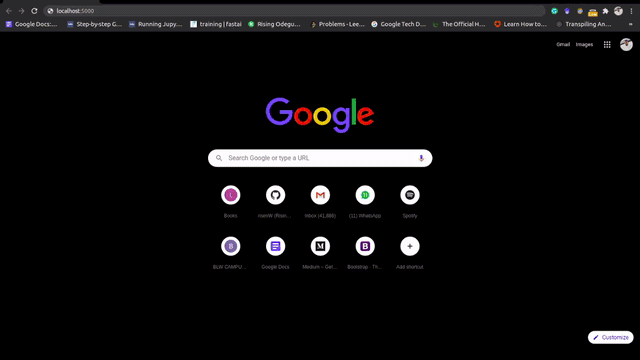Heads up! This an end-to-end article series. In its three parts, I’m going to show you how to train, save, and deploy a recommender model. Specifically, you will understand how to get and process your data, build and train a neural network, package it in an application, and finally serve it over the internet for everyone to see and use.
At the end of this tutorial, you’ll have a book recommender application that can suggest books to users based on their history and preferences. We’ll get into the details of how this works shortly, but before that, below is the result of what you’ll be building:

Book Recommender Web Application
In this first part of the series, you will learn how to build and train the recommender model. In part 2, you’ll learn how to convert and embed the model in a web application, as well as make recommendations. And finally, in part 3, you’ll learn how to deploy your application using Firebase.
Table of Contents
- Introduction to recommender systems
- Downloading and pre-processing the book dataset
- Building the recommendation engine using TensorFlow / Keras
- Training and saving the model
- Visualizing the embedding layer with TensorFlow embedding projector
- Making recommendations for users
- Conclusion
Introduction to Recommender Systems
A recommender system, in simple terms, seeks to model a user’s behavior regarding targeted items and/or products. That is, a recommender system leverages user data to better understand how they interact with items. Items here could be books in a book store, movies on a streaming platform, clothes in an online marketplace, or even friends on Facebook.
Types of Recommender Systems
There are two primary types of recommender systems:
- Collaborative Filtering Systems: These types of recommender systems are based on the user’s direct behavior. That is, this system builds a model of the user based on past choices, activities, and preferences. It then uses this knowledge to predict what the user will like based on their similarity to other user profiles.
So in essence, collaborative filtering understands how you interact with items, and then finds other users who behave like you—and then recommend what these other users like to you.
2. Content-Based Filtering System: Content-based recommender systems, on the other hand, are based on the items, and not necessarily the users. This method builds an understanding of similarity between items. That is, it recommends items that are similar to each other in terms of properties.
In essence, content-based recommender systems understand the similarity between items, and will recommend items that are similar to the one the user has seen, purchased, or interacted with before.

Two Major Types of Recommender Systems (Source)
There is a third type of recommender system, known as a hybrid approach. As you can guess, this approach combines the collaborative and content-based approaches to build better and more generalized systems. That is, it basically combines the strength of both approaches.
#tensorflowjs #heartbeat #recommender-systems #javascript #keras
